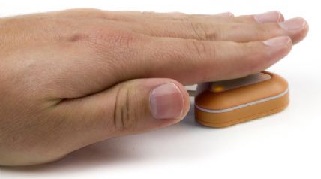Blog Roll: (Contributors)
» Hulet Smith, OT
» Megan Smith, PT
» Mike Price, OT
Topics:
Adaptive Devices
Adult Tricycles
Air Purifier
Allergy
Alternative Communication Devices
Alzheimer's Dementia Products
Aquatic Products
Arthritis Relief Products
Autism
Back Relief
Ball Pit/Pool
Bariatric
Bath Benches
Bathtub Lift
Bed Rails
Bedsores / Decubitus
Bidet
Body Solid Exercise Products
Breast Feeding Products
Bushel Trucks
Cancer
Catheters
CEU
Changing Bench
Child Car Seats
Child Care Products
Christmas Gifts
Clinic/Medical Equipment
Clinical Furniture
Cold and Flu
Communication Devices
Compression Garments
Computer Products
CPAP
Crutches
Daily Assistance Products
Daylight Lamps
Dental Care
Diabetes
Doctor's Office
Dysphagia
Electrodes
Electrolarynx
Emergency Preparedness
Ergonomic Equipment
Exam Tables
Exercise Products
Eyecare
Family Tricycles
First Aid Kits
Floor Scales
Fluidotherapy
Foot Drop
Foul Weather Gear
Furniture
Gait Trainers
General Articles
General Posts
Glassless Mirrors
Hand Sanitizer
Head Protection Helmets
Hearing Impaired
Heart Health
Heating Pad
Hip Fractures
Home Assistance Products
Home/Office Assistance
Hospital Beds
Hoyer Lifts
Hyperbaric chamber
Hyperthermia/Hypothermia
Ice/Hydration Carts
Impotence Products
Incontinence Products
Infection Control Gowns
Inspirational Stories
Lift Chairs
Light Therapy
Low Vision Products
Massage Tables & Chairs
Massage Units
Maternity
Medical Facility Products
Medical Scales
Multi-Sensory Environment
Natural Healing
Nebulizers
Non-Hospital Bedding
Nutritional Supplements
Office Furniture
One-Handed Products
Operating Room Devices
Ostomy Products
Oxygen Compressors
Oxygen Concentrator
Oxygen/Nebulizer Masks
Pain Relief
Paraffin Unit
Patient Lift
Patient Lifts
Patient Restraints
Patient Transfer Systems
Pediatric Bath Chairs
Pediatric Furniture
Pediatric Learning
Pediatric Recreation
Personal Listening Devices
Personal Warming Products
Physical Therapy
Pill Organizers
Pillows
Playground Equipment
Pool Lifts
Press Releases
Procedure Chairs
Pulse Oximeter
Reading Assistance
Reference Materials
Rehab Equipment
Rehabmart News
Rehabmart Newsletter
Respiratory Health
Rollators
Saunas
Scooters
Seniors
Shower Chairs
Shower Commode Chairs
Shower Gurney
Showers Chairs
Side Access Bathtubs
Skin Tear
Special Needs Dinnerware
Special Needs Seating
Special Report Articles
Splints
Sport Injuries
Standers
Staying Home
Stethoscopes
Stimulus Reward Toys
Stress Relief
Stroke
Strollers
Summertime Products and Summertime Fun
Talking Products
Therapy Balls
TheraTogs
Thermometers
Traction Devices & Tables
Treatment Tables
Ultrasound
Vibroacoustic Therapy
Vision Products
Walk-In Bathtub
Walking Aids
Walking Boot
Weighted Wearables
Wheelchair Accessories
Wheelchair Cushions
Wheelchair Lifts
Wheelchair Ramps
Wheelchair Transfer Systems
Wheelchairs
Women's Health
Work Hardening Products
Wound Care
Adaptive Devices Enhance Technology for Everyone
Computers and smartphones are examples of touchscreen devices that are in use everywhere these days. While most people merely click and drag away on their mouses to see images and to send messages, or are able to place calls with a touch of their fingers, or turn a device on and off with the touch of a switch, others may find it difficult or impossible to work with today's technologies due to conditions that impact the ability to use their hands. Neurological or orthopedic challenges may make it difficult even to press a button or to enter commands via a touchscreen interface, let alone operate mobility devices. Other communication issues may arise from sensory processing difficulties or visual impairment.
Adaptive devices to allow and enhance the communication experience for people facing these issues are available, and Rehabmart offers several.

The Candy Corn Proximity Sensor Switch resembles its namesake: a piece of candy corn. It provides an easy solution for users who may lack the dexterity or the strength to work a pre-existing switch on a device such as a computer, or to control a mobility device or a toy with on/off switches. With a wave of the hand within ten millimeters of the switch, the user can control a communications device, a sensory room, or heating and cooling systems. It provides auditory and visual feedback for the user to let him or her know that the device has been turned on or off. It is suitable for use by people who live with developmental delays as well as physical limitations.


Supporting smartphone users with dexterity challenges or strength issues are the Smart Phone Holder and Mounting System and the Adjustable Stylus. The Smartphone Holder allows a phone to be attached to a table, or with the help of a mounting system, to a bed rail or wheelchair arm to position it at the correct height for the user. The phone is held in place on a small platform by ratcheted foam covered sides, allowing for a secure grip. It can be used with either an iPhone or one of the Android phones. For users who have problems with manual dexterity challenges, the Adjustable Stylus allows them to operate a touchscreen with accuracy and speed. The stylus is attached to either of the user's hands with a Velcro strap and acts like a sixth finger. It can be extended to nineteen inches long to optimize interface with the touchscreen of a smartphone or other device.

For anyone living with the challenges of visual impairment, or who may be looking for an alternative to writing messages on paper, the Talkable II Communicator can record two voice messages of up to twenty seconds each. There are two large buttons for recording and playback of the messages, both outlined in black to enhance visibility. To record, the user holds down the button while speaking into the microphone. To play back, simply press the button, as there is no need to hold it down. Located just above each button is a small holder intended to hold pictures related to the messages, adding another layer of meaning to the message and possibly helping people with sensory disorders to better comprehend the message.
In the past, physical or developmental challenges may have caused a person to feel isolated. Thanks to today's communication devices and adaptive technologies, it's easier than ever to get connected and stay connected with members of the immediate circle as well as the world at large.
Fran Jablway,
Medical Consumer Writer
and
Hulet Smith, OT
Rehabmart Team Leader & CEO
